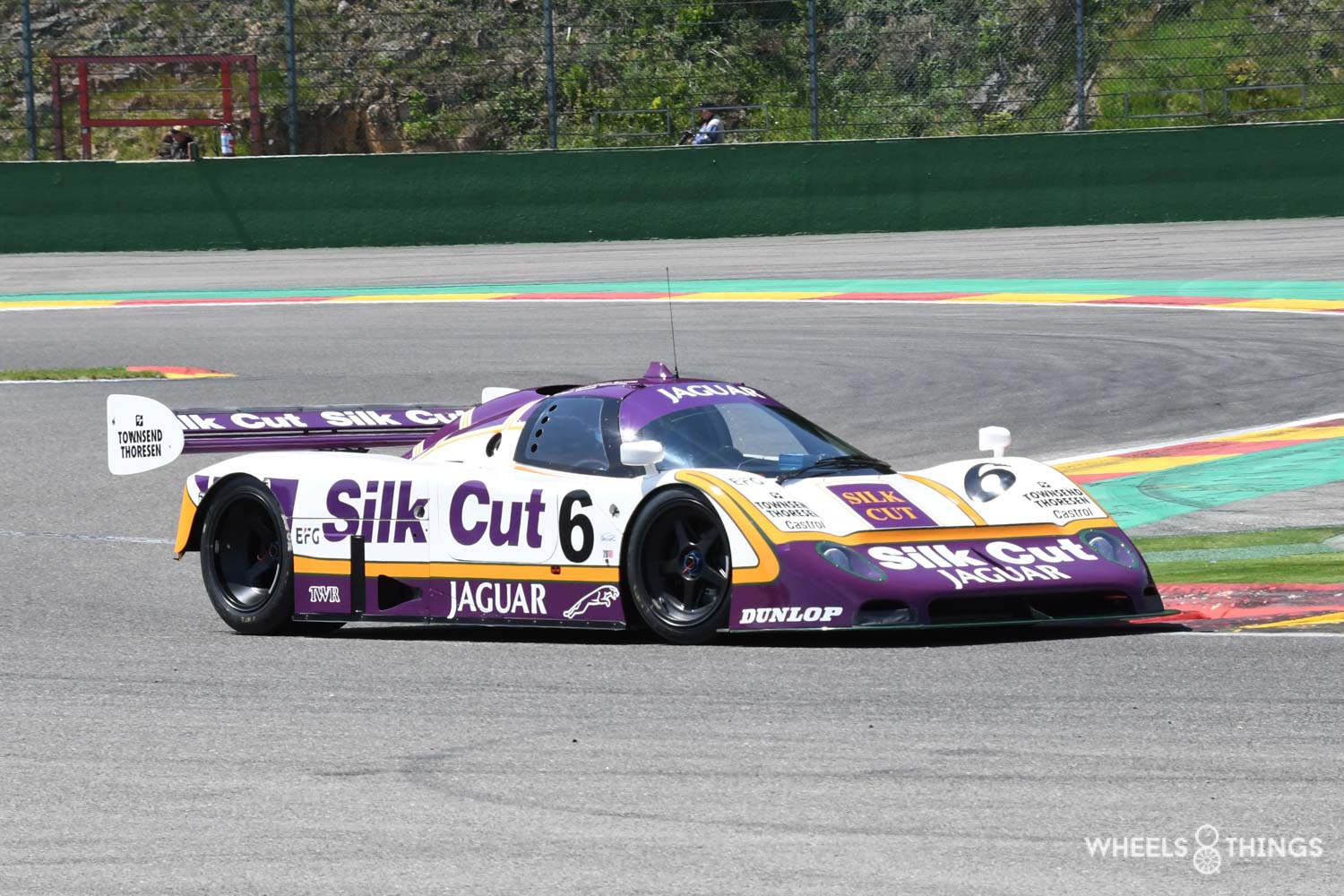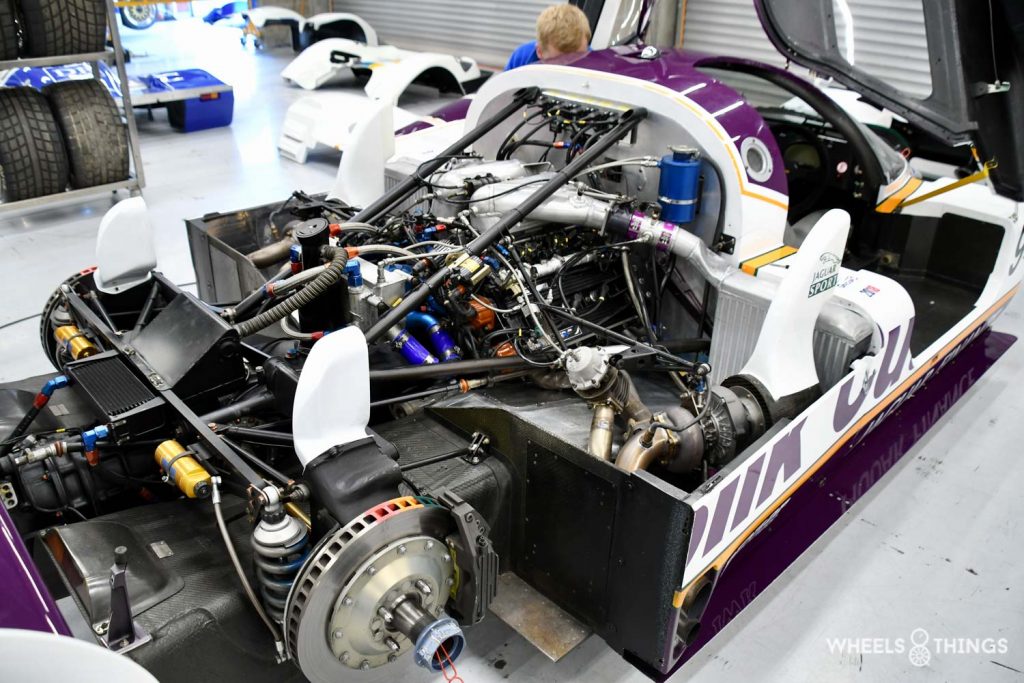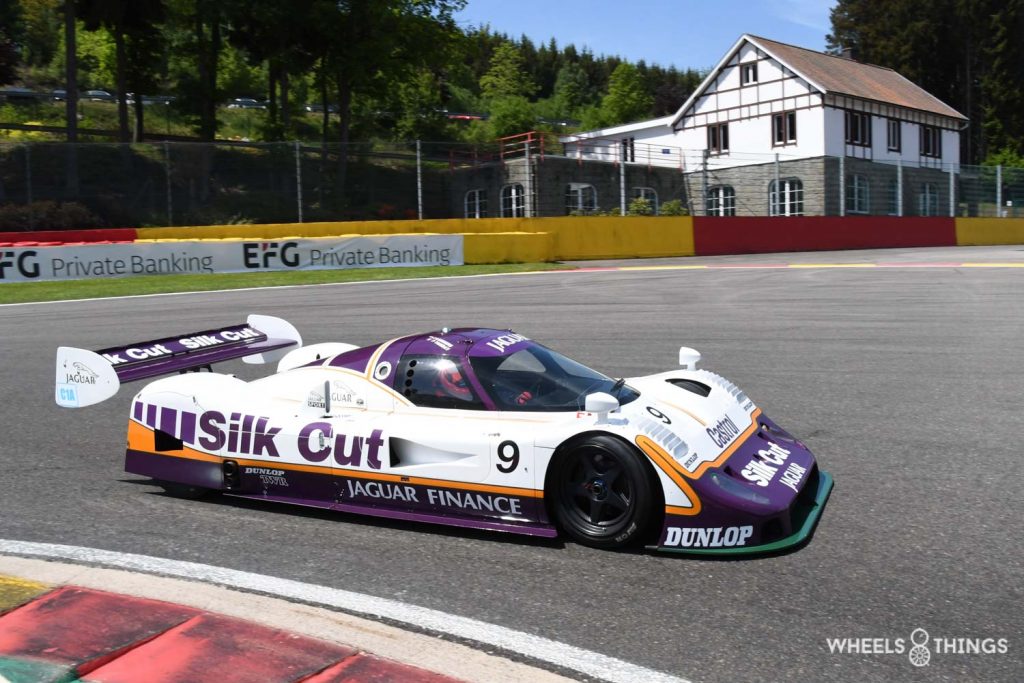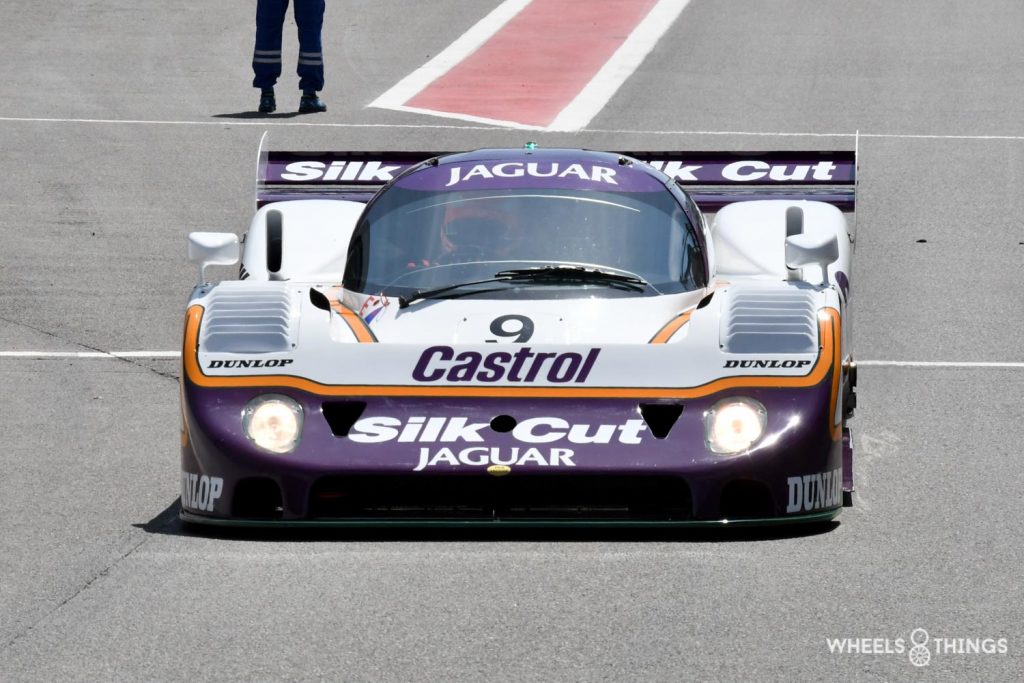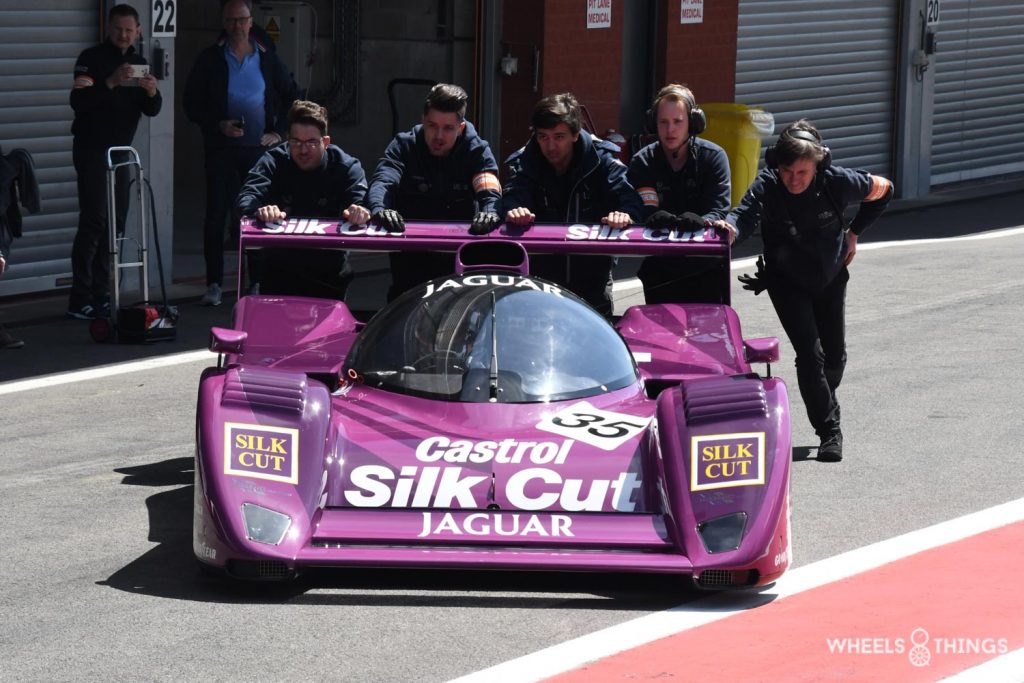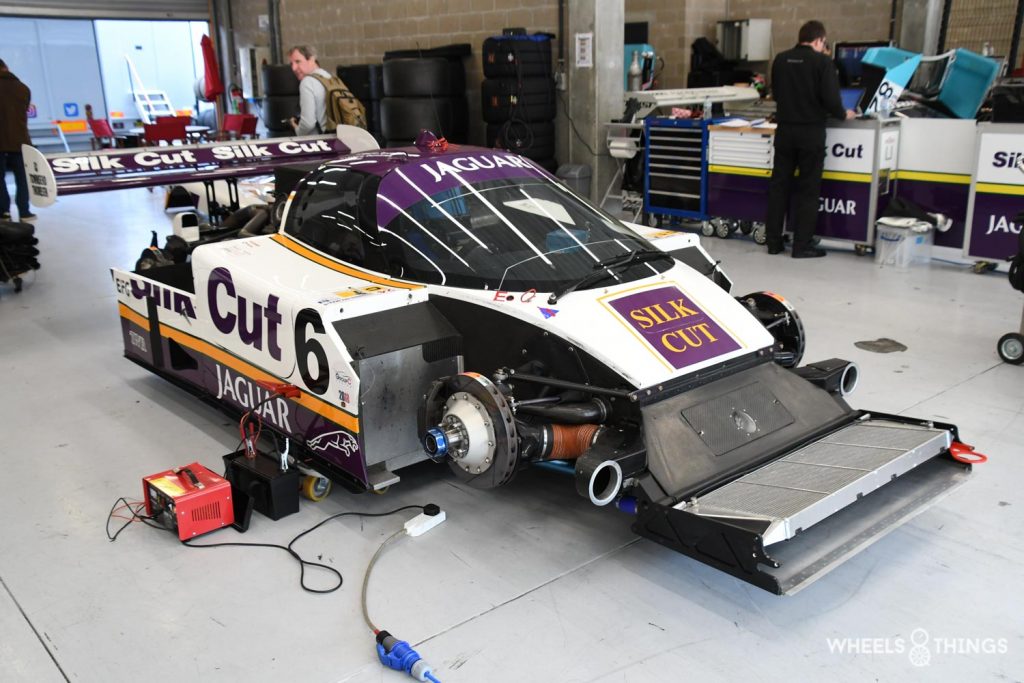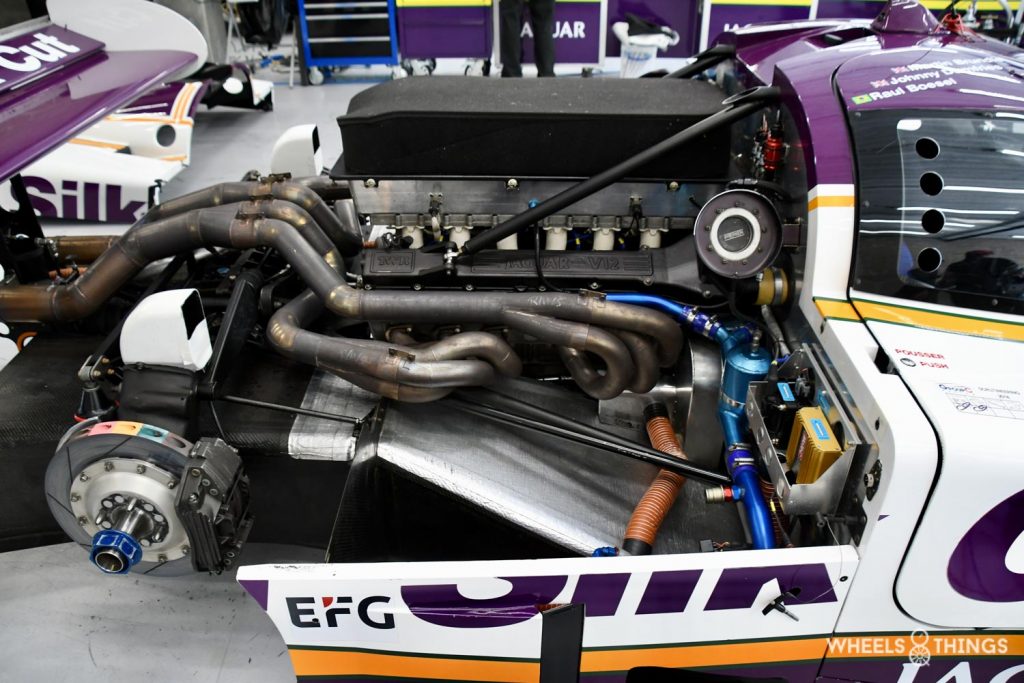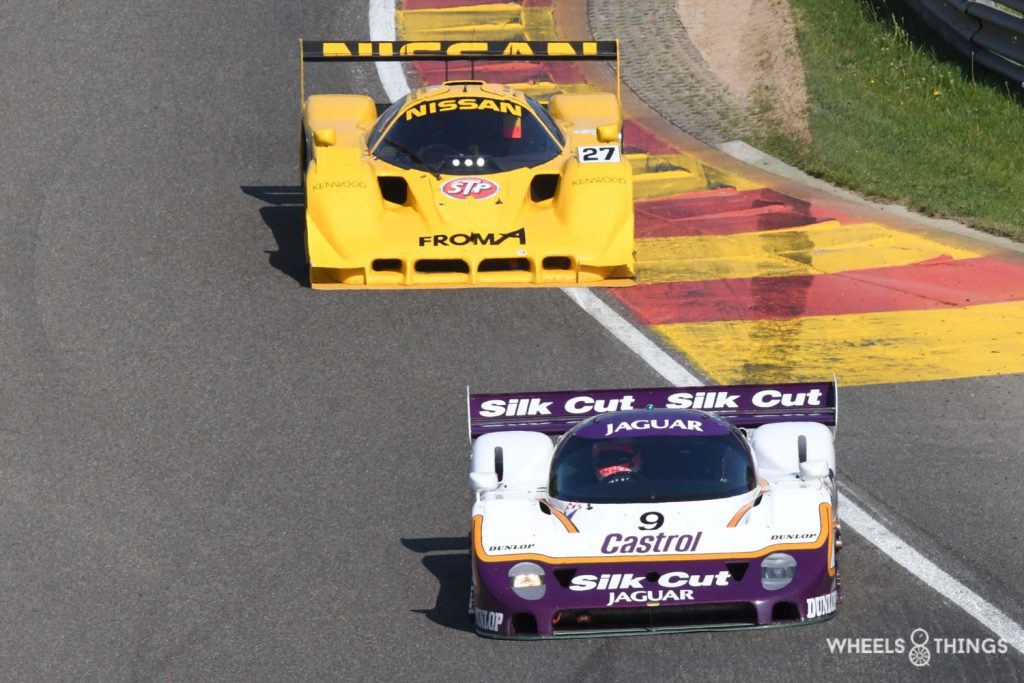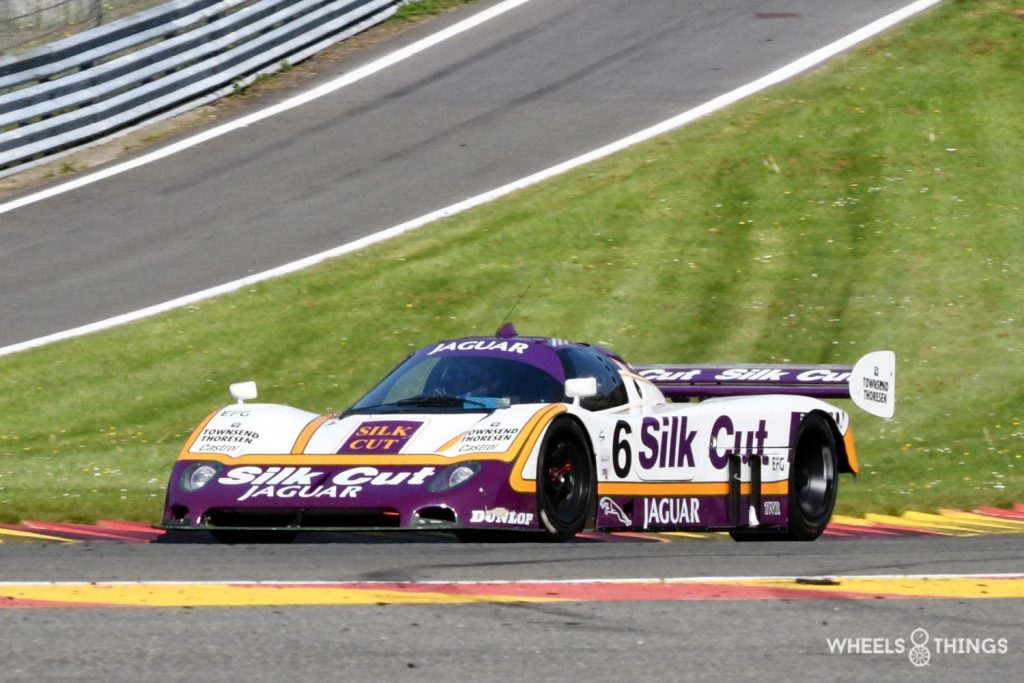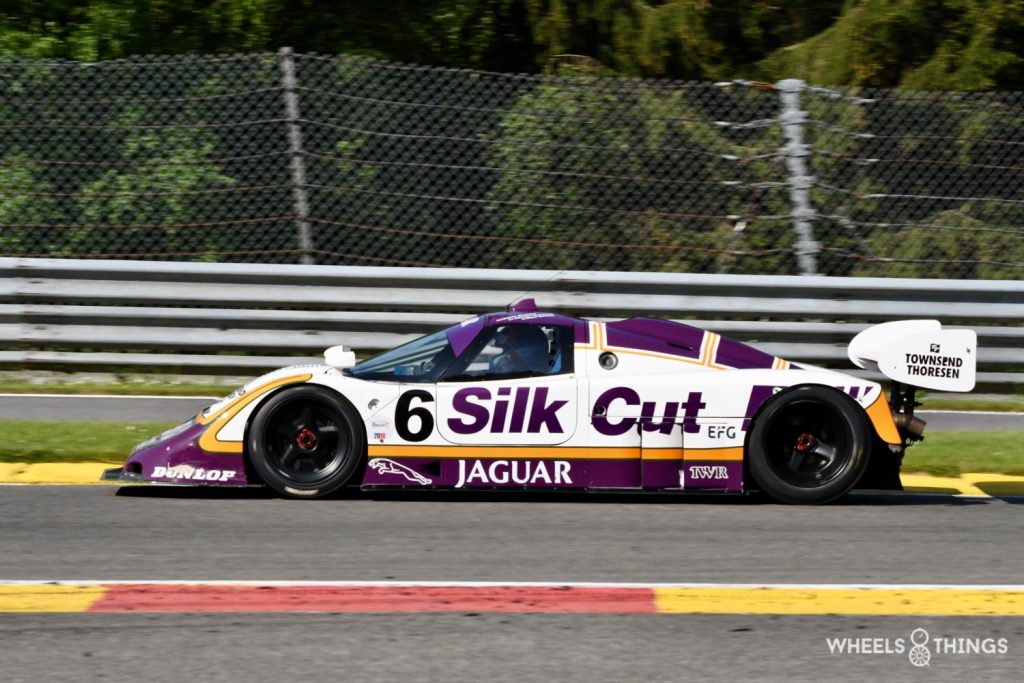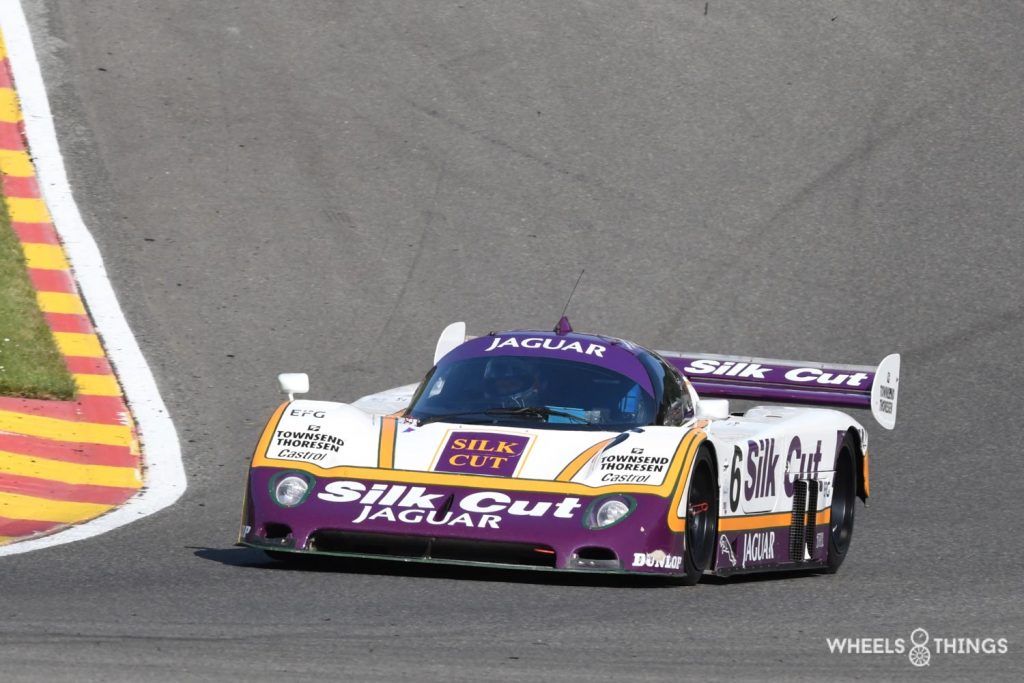
In its ten years of existence, Group C has produced many beautiful racing cars. Porsche, Mercedes, Mazda and Jaguar in particular have created some fine cars. And when it comes to the very best, the TWR Jaguars are in the top drawer.
And of these TWR Jaguars, the white/purple Silk Cut versions are surely the pinnacle. We were delighted to find three of them in the pit boxes at Spa Classic 2018: the XJR8, XJR9 and an XJR11. What a luxury! In addition to these, there were also two XJR14 versions present. This XJR14 has already been covered in an article in 2016. All info can be found here. Today, XJR8 and XJR11 will be featured.

We start with the XJR 8 of 1987. The car present was the version with the bodywork used in the 1000 km races for the World Championship and the German sprint races of the Würth Supercup. There is also an LM version of this XJR 8 that was only used in the Le Mans 24 Hours. This successor to the XJR 6 – more information on the debut of this car – immediately dealt the Porsche colleagues in Stuttgart some serious uppercuts by completely dominating the start of the 1987 World Championship and the subsequent races at Jarama, Jerez, Monza and home ground Silverstone. With the Jaguar-Porsche duel 4-0, more than 40,000 British fans flocked to Le Mans to cheer their brand to victory. Unfortunately, their massive support was not enough, as of the three entered XJR 8 LMs, only one could cross the finish line in a mediocre fifth place.
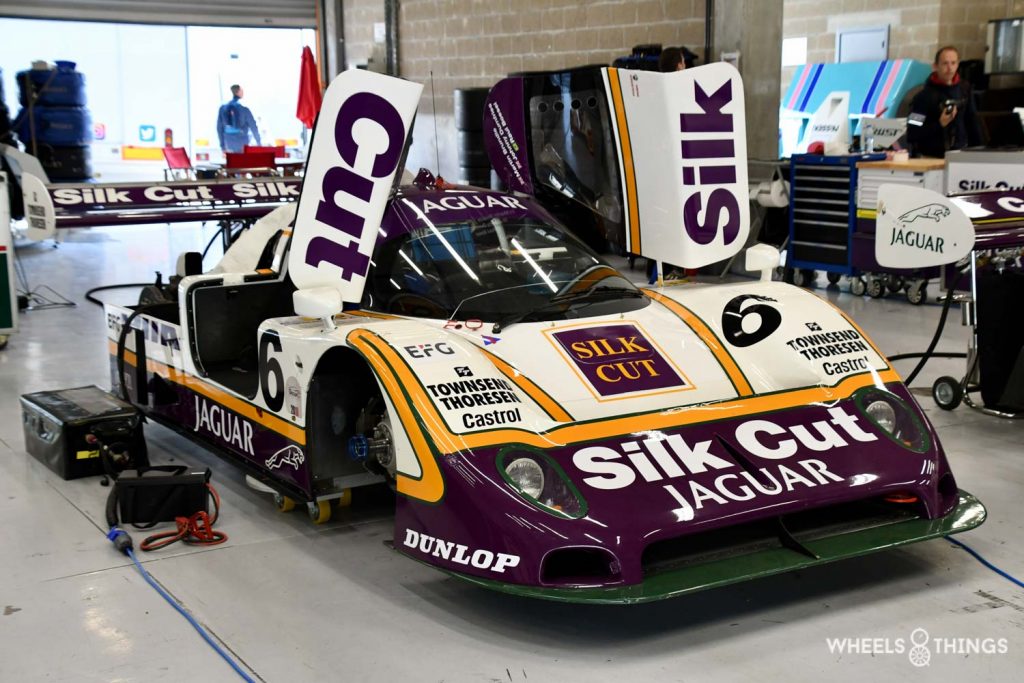
It was, however, the first time that a TWR Jaguar made it to the end of this classic. Jaguar will have to wait another year to make another attempt. Two weeks later, at the German Norisring, they will have to take the thumbs down from Porsche once again, with fourth place as their best result. June was exactly an unlucky month for TWR Jaguar. From July onwards, the tide turned and with victories at Brands Hatch, the Nürburgring, our own Spa-Francorchamps and the Japanese Fuji, Porsche was humiliated for the first time in years. The world championship title was, of course, awarded to the Jaguar brand, and their Brazilian Raoul Boesel was the best-placed driver. Following him were three more Jaguar pilots with Jan Lammers, John Watson and Eddie Cheever. Then came the first Porsch drivers Hans Stuck and Derek Bell. A successful campaign, but the defeat in the 24 hours of Le Mans was still a hard blow. This would be made up for in 1988 where successor XJR 9 would achieve this. We were among the lucky ones as an XJR 9 was also present at Spa. It was the car with start number 3. We’re going to pass on the XJR 9 for now, but we’ll be coming back to its little brother, winner of the 1988 Le Mans 24 Hours, bearing race number 2. Three examples of the XJR 8 were built. The LM versions were therefore modified for Le Mans and afterwards returned to their original state. The defeat was so heavy for Porsche that it withdrew from the World Championship and the last Rothmans Porsches 962 disappeared from the battlefield. This was a rather unique event. It did not often happen that Porsche had to withdraw and that a stronger opponent was the reason.
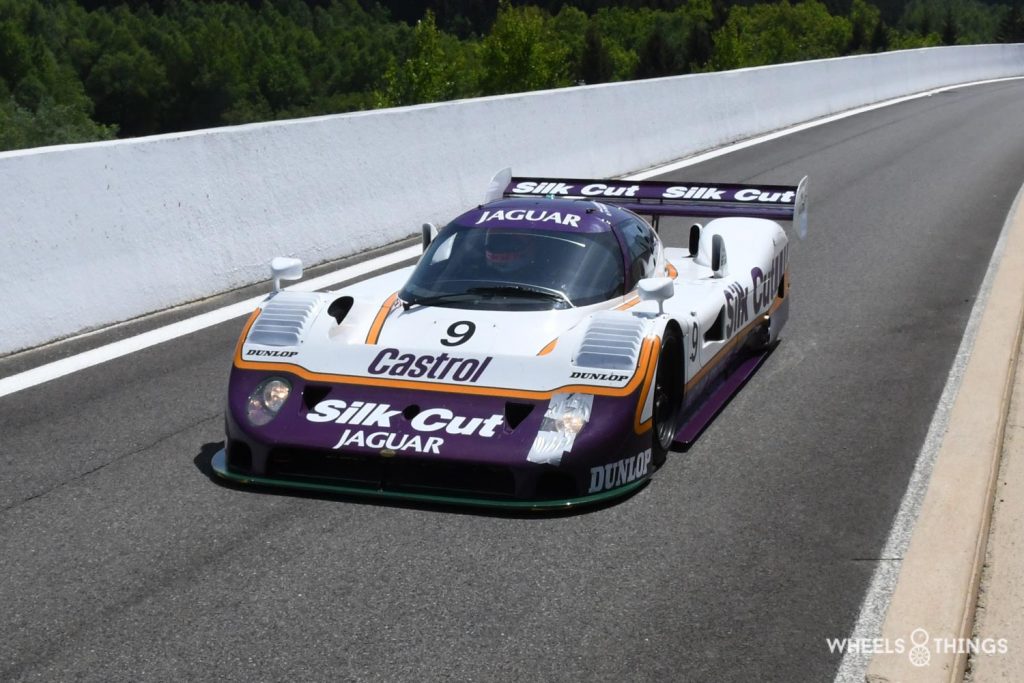
Also present was the XJR 11. This, we repeat, beautiful car was fitted with the covered rear wheels. This application was used regularly by TWR Jaguar, both on the high speed circuit of Le Mans and in other competitions. With Porsche, apart from a few initiatives by a few private teams, this was never the case. The big novelty in this XJR 11 was the engine. The good old 12 cylinder engine was replaced by a more modern 3.5 V6 turbocharged version. Modern? Not really. The basis was a Rover engine that had been modified and fitted with turbo technology. The reliability of the old V12 was much higher than this V6. The development was therefore a disaster for the TWR team.

The XJR 11 made its debut after the 1989 Le Mans 24 Hours at Brands Hatch. Sauber Mercedes, meanwhile, had also established itself as a full-fledged Mercedes factory team and had entered the debates. The Mercedes V8 turbo in the Swiss Sauber chassis had reached full speed after a few years of development and had just won the 24 hours of Le Mans. TWR wanted the XJR 11 to stand up to this new German adversary, but it was not going to be easy. One year after its debut, the champagne bottles could be uncorked for the first time. Martin Brundle and Alain Ferté win the BRDC Empire Trophy at Silverstone. Hope returns to the Jaguar team, but unfortunately for them it will remain a one-win race. In the remaining races, there are only a few places of honour and many technical problems. The development time for this V6 turbo version was too short and with the new regulations coming into force in 1991, the turbo will have to make way again for a Formula 1-derived atmospheric V8 3.5 litre engine. TWR Jaguar will compete with the aforementioned XJR 14, which will once again provide success and a world title. The XJR 11 was the least successful Silk Cut Jaguar in the series but in terms of looks, it has certainly been at the front of the queue. Three examples of the XJR 11 were built by TWR.

Every now and then we come across a TWR Jaguar but at Spa Classic 2018 we were really spoiled with 5 of them in one weekend. The XJR 8, XJR 11 and the XJR 9 we discussed took part in both races. It actually went like 30 years ago. All three raced in the top 10 of both races and just like then it was the XJR 11 that had to give up in both races due to technical problems. XJR 8 and 9 finished Saturday on P6 and P7. Sunday they did a little better with P4 and 5. Sunday there was a moment in the race where all three drove into the most beautiful corner in the world one after the other. In the words of James Bond: A View to a Kill and never to be forgotten!
Report & photos: Joris de Cock
